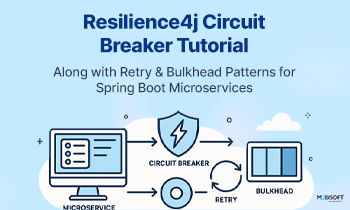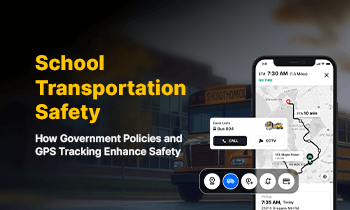In our previous blog, we uncovered the retail model of Quick Commerce, shedding light on the intricacies of the upcoming trends in the retail sector. Building upon that foundation, this follow-up post will delve deeper into the challenges that arise before and after the quick commerce adoption. Additionally, we will explore the potential solutions to overcome these challenges as well as the opportunities that accompany them.

Quick commerce has emerged as a panacea for consumers seeking same-day deliveries. The tantalizing promise of delivering essential goods, including groceries and household items, within minutes has redefined the shopping experience.
Customers now have the convenience of acquiring their essentials instantly, while eliminating the need to visit brick-and-mortar stores or pre-plan their purchases. Likewise, it has blurred the lines between online and offline retail channels. Consumers can seamlessly transition from browsing online to receiving products at their doorstep within hours, or even minutes.
Besides, a burgeoning number of companies have hit the strides in the market considering the evolving retail digital transformation trends and insatiable consumer demands. The integration of emerging technologies, including AI, ML, data analytics, and robotics process automation, has propelled the global quick commerce market growth, which is projected to hit US$173.20bn by the end of 2024.
However, this pursuit of efficiency in ultra-fast delivery is often accompanied by substantial challenges for many quick commerce companies. Concerns are arising about the sustainability and operational effectiveness of this dynamic business model, despite pouring billions of dollars into shaving off delivery times. Let’s discuss them in detail.
Quick Commerce Challenges and Solutions
Amidst the rush to deliver consumer goods within a few minutes, retailers encounter significant challenges throughout the quick commerce adoption journey.
Having a thorough understanding of these problems is key for retailers as they navigate the dynamic landscape of quick commerce or say Instant commerce and strive to capitalize on its potential while mitigating its pitfalls. Let’s explore the challenges accompanied by solutions before adoption, then transition to the challenges encountered afterward.
Challenges and Solutions Before Adopting Quick Commerce:
#1 Transitioning from traditional business models:
Retailers who are comfortable with traditional brick-and-mortar setups may find it challenging to transition to the technological and operational shifts necessary for quick commerce at the beginning.
They struggle to reallocate resources, retrain staff, and overhaul existing business infrastructure to accommodate the shift to digital platforms and rapid fulfillment operations.
For a lot of retail companies, moving from traditional systems to a digitized one is a daunting task, primarily due to the difficulties faced in logistics, assortment logic, pricing, and branding.
Solution:
This transition requires a mindset shift and a willingness to embrace change. Retailers should invest in adaptable technologies that facilitate same-day delivery, upgrade from legacy to digital infrastructure, provide employee training, and focus on streamlining operations using smart tools to improve efficiency. Partnering with a trusted digital retail and eCommerce partner can provide valuable expertise and support throughout this transition process.
#2 Finding the right delivery partners:
Identifying and partnering with reliable fulfillment partners capable of meeting the exacting demands of quick commerce logistics is fraught with several challenges such as –
- Meeting tight delivery timeframes
- Ensuring comprehensive urban coverage
- Maintaining consistent reliability amidst fluctuating demand
- Scaling operations effectively as the business grows
- Integrating with quick commerce software for seamless synchronization
- Balancing cost-effectiveness with service quality
Because not all delivery partners possess the capability to meet the stringent demands of quick delivery services. The essence of a quick commerce solution relies on rapid order fulfillment, which requires partners with specialized logistics capabilities and operational agility.
The lack of infrastructure and efficiency in traditional delivery services make them ill-suited for ultra-fast delivery, which is necessary for quick ecommerce operations. This strict requirement significantly limits the options for potential partners, heightening the challenge of finding suitable delivery partners for QCommerce businesses.
Solution:
Retailers should implement a rigorous vetting process and prioritize partnerships with specialized urban logistics providers capable of fast delivery. As a retail business owner, you should evaluate potential fulfillment partners based on their track record, reliability, transparency, and capacity for rapid delivery. Additionally, integrating technology solutions like route optimization software and real-time tracking systems can enhance delivery operations.
#3 Tackling logistical constraints:
Establishing an agile and responsive logistics network capable of supporting rapid delivery and fulfillment is no small feat.
Retailers usually encounter challenges in optimizing inventory management, streamlining order fulfillment processes, and coordinating last-mile delivery logistics. In densely populated urban areas, these challenges become especially difficult due to traffic congestion and infrastructure limitations.
Solution:
Retailers should conduct a thorough assessment of their existing supply chain infrastructure and identify areas for improvement. By incorporating digital solutions like scanning solutions for logistics, inventory management systems, and demand forecasting tools, supply chain visibility and agility can be enhanced.
#4 Making substantial technological investments:
The transition to quick commerce necessitates significant investments in emerging technologies and setting up smart infrastructure. This means it can strain financial resources, particularly for smaller retailers with limited budgets.
Moreover, integrating and maintaining complex systems such as order management platforms and inventory tracking solutions requires technical expertise and ongoing support, adding to the operational costs and complexities.
Solution:
To tackle this common issue, retailers must prioritize investments by identifying key technological solutions like mCommerce solutions or quick commerce apps that directly contribute to improving the efficiency and effectiveness of their quick commerce operations. You can explore tech partnerships, utilize SaaS solutions, and consider phased implementations to manage costs and accelerate quick commerce adoption.
#5 Contending with market competition, top quick commerce players:
The proliferation of competitors in the quick commerce market has intensified competition. This saturation has made it challenging for retailers to differentiate themselves and carve out a distinctive niche in the market.
Cracking the code on unit economies, price wars, margin pressure, strained supply chains and logistics networks, etc. have negatively affected profitability for all players involved. Also, the relentless pursuit of market share and customer acquisition can lead to a race to the bottom, undermining the sustainability of businesses in the long run.
Solution:
To stand out in a crowded marketplace, retailers should focus on differentiation strategies that highlight unique value propositions, such as niche product offerings, superior customer service, or innovative delivery options. Tech investments are necessary in order to optimize operations, tailor shopping experiences, and lead in service offerings. Additionally, strategic partnerships and collaborations with complementary businesses or influencers can expand reach and capabilities while minimizing costs and risks
#6 Ensuring ethical supply chain practices:
The key challenges in maintaining ethical supply chain practices in quick commerce stem from the heavy focus on speed and efficiency, potentially leading to the exploitation of workers under demanding conditions and tight delivery schedules.
Furthermore, the complexity of supply chains in quick commerce makes it challenging to trace product origins and ensure compliance with ethical standards regarding labor rights, environmental sustainability, and fair trade practices.
Solution:
Retailers can tackle ethical supply chain issues in this quick commerce model by prioritizing partnerships with suppliers and logistics providers that adhere to strict ethical standards. The use of blockchain or similar digital platforms can have a significant impact on enhancing visibility and traceability in the process. Besides, retailers can engage with quick commerce industry stakeholders, certification bodies, and non-governmental organizations to collaborate on ethical sourcing initiatives and share best practices. This helps ensure compliance with ethical standards and builds trust with consumers.

Challenges and Solutions After Adopting Quick Commerce:
#1 Ensuring on-time deliveries within 60 minutes
Meeting consumer expectations for ultra-fast delivery within a 60-minute timeframe presents logistical and operational challenges for retailers. In actual practice, such rapid delivery can only be achieved by coordinating multiple orders and optimizing delivery routes. This is facilitated by minimizing delivery times through real-time visibility into inventory, demand forecasting, and agile logistics capabilities.
However, factors such as traffic congestion, delivery time windows, and the availability of delivery personnel can lead to delays, missed deliveries, and increased costs. Any delays or disruptions in the delivery process can lead to customer dissatisfaction and reputational damage, underscoring the importance of reliable and punctual service.
Balancing speed with efficiency and reliability in the final leg of the delivery process remains a persistent challenge for retailers.
Solution:
To deliver the promise of lightning-fast delivery, retailers can deploy fulfillment centers (dark stores) strategically and optimize delivery routes by using predictive analytics, fleet tracking systems, and agile last-mile delivery solutions. Ideally, partnerships with local suppliers and integrating with third-party logistics providers can enhance the efficiency of the delivery process, ensuring timely fulfillment of orders.
#2 Executing hundreds of on-demand orders
The shift to quick commerce entails the fulfillment of a high volume of on-demand delivery orders, placing significant strain on inventory management, order processing, and delivery logistics. Retailers encounter difficulties in managing fluctuations in demand, optimizing warehouse operations, and coordinating delivery routes to ensure efficient and accurate order fulfillment.
Solution:
Scalable systems and streamlined processes are crucial to meet the demands of rapid order fulfillment effectively. Retailers must prioritize the implementation of scalable technology solutions and streamline operational processes. With advanced order management systems and optimizing warehouse operations, retailers can increase productivity and throughput to meet the demands of rapid order fulfillment effectively.
#3 Struggle with working conditions during the order fulfillment process
The ongoing challenge of upholding fair and ethical working conditions for employees in rapid commerce operations, like delivery drivers and warehouse staff, remains a top priority for retailers.
The pressure to fulfill accurate orders quickly and meet tight delivery windows can lead to issues such as fatigue, stress, and safety risks among workers. To promote ethical labor practices and maintain a satisfied and retained workforce, it is important to balance efficiency with employee well-being.
Solution:
Retailers can create a sustainable and productive work environment conducive to meeting the demands of quick commerce. This includes providing comprehensive training, ergonomic workstations, and flexible scheduling policies to strike a balance between operational efficiency and ethical labor practices. It is also possible to automate repetitive tasks, decrease manual labor, and improve working conditions by using emerging retail technologies like robotics process automation and AI.
#4 Managing operational costs:
The operational costs associated with sustaining quick commerce business operations can be substantial. Expenses related to technology infrastructure, delivery logistics, and workforce management constitute continuous costs for local retail businesses. Besides, the pressure to offer competitive pricing and free or low-cost delivery services further strains profit margins, which requires retailers to find a delicate balance between service quality and cost efficiency.
Solution:
Continuously monitoring and optimizing operational expenses by leveraging data analytics can help you identify cost-saving business opportunities. Retail business owners or merchants can renegotiate contracts with suppliers and fulfillment partners, and explore alternative quick commerce delivery models such as crowdshipping or micro-fulfillment centers.
#5 Ensuring quality control:
The fast-paced nature of quick commerce presents significant challenges in maintaining consistent product quality and accurate order fulfillment. Retailers must contend with issues such as inventory discrepancies, product damage during transit, and order inaccuracies, all of which can erode customer trust and satisfaction.
Solution:
Implementing robust quality control measures and monitoring mechanisms is essential to mitigate the above quality control risks. Retailers can incorporate tech-based retail solutions such as barcod scanning and real-time tracking to ensure accurate order fulfillment and minimize human errors. In this scenario, soliciting feedback from customers and addressing any issues promptly can help maintain trust and customer satisfaction.
#6 Navigating regulatory compliance:
Navigating the regulatory landscape governing eCommerce, transportation, and labor practices poses compliance challenges for retailers operating in the quick commerce space. Failure to comply with regulatory requirements can result in legal liabilities, reputational damage, and financial penalties.
Solution:
Stay abreast of regulatory changes and proactively update policies and procedures to ensure compliance with relevant laws and regulations. To avoid legal issues, retailers should invest in compliance management systems to adhere to data privacy regulations, employment laws, and consumer protection standards.
#7 Scaling operations sustainably:
Quick commerce companies grapple with scalability obstacles as they endeavor to expand operations to cope with increasing demand, all while ensuring ultra-fast delivery, quality, and profitability remain uncompromised.
Rapid expansion of the business can strain existing infrastructure, overwhelm logistics networks, and stretch workforce capacity. This leads to operational inefficiencies and service disruptions. Balancing the need for growth with the ability to scale resources and capabilities accordingly is crucial for sustained success.
Solution:
With a unified quick commerce solution powered by scalable infrastructure and advanced tools, retailers can seamlessly handle fluctuating customer demands. Moreover, developing contingency plans and scalability roadmaps can help anticipate and address potential bottlenecks or challenges associated with rapid expansion.
To overcome these challenges, retailers must embrace a comprehensive and strategic approach to integrating quick commerce into their operations. QCommerce is about optimizing the end-to-end system with technology, data, and infrastructure.
Yet, there lies opportunities for companies to innovate and sustain this trending quick commerce business model that helps you create your assortments, forecast demands, plan, and serve every everyday needs of millions of people accordingly. Let’s explore those opportunities.
Quick Commerce As An Opportunity for Retailers
Key players in this quick commerce space are now recognizing that this is a pivotal moment at hand for the industry, marking a significant shift in how people shop. They’re in ramp-up mode rightnow as the new biz model is here to stay with a promising user growth potential and realizable path to profitability that includes key factors such as –
- A higher increase in Average Order Value (AOV) as Qcommerce encourages impulse purchases and frequent transactions.
- Improved dark store utilization enhancing efficiency and reducing costs.
- Rise in commissions earned from merchants for higher transaction volume.
- Push towards high Average Selling Price (ASP) SKUs via quick commerce platforms boosting revenue per transaction.
- Ad revenue opportunities in QCommerce due to targeted advertising based on customer data.
Today’s era presents a promising opportunity for these quick commerce companies to redefine themselves. They can reach untapped customer segments by offering a wide range of everyday non-grocery items, spanning from electronics to furniture, cosmetics, and books.
Not to forget, in today’s influencer era, many quick commerce companies are actively exploring and experimenting with new retail business models by forging partnerships with various stakeholders, businesses, and leading influencers.
By seizing these opportunities and harnessing the power of technology, retailers can not only cater to the evolving demands of smart consumers but also play a vital role in shaping a more sustainable future.
Conclusion
The quick commerce landscape presents both challenges and opportunities for retailers. To thrive in this dynamic environment, adaptability is key. By embracing change, prioritizing customer-centric strategies, and fostering collaboration within the industry, retailers can navigate the complexities of quick commerce adoption successfully. Through partnerships and shared insights, retailers can collectively address challenges, capitalize on business opportunities, and drive innovation forward.
As the quick commerce ecosystem continues to evolve, retailers who embrace this transformative journey will not only survive but also sustain in the long run. So, let’s simplify the quick commerce adoption journey together leveraging our retail business transformation expertise and shape the future of retail together. Connect with us today!

Author's Bio

Nitin Lahoti is the Co-Founder and Director at Mobisoft Infotech. He has 15 years of experience in Design, Business Development and Startups. His expertise is in Product Ideation, UX/UI design, Startup consulting and mentoring. He prefers business readings and loves traveling.


